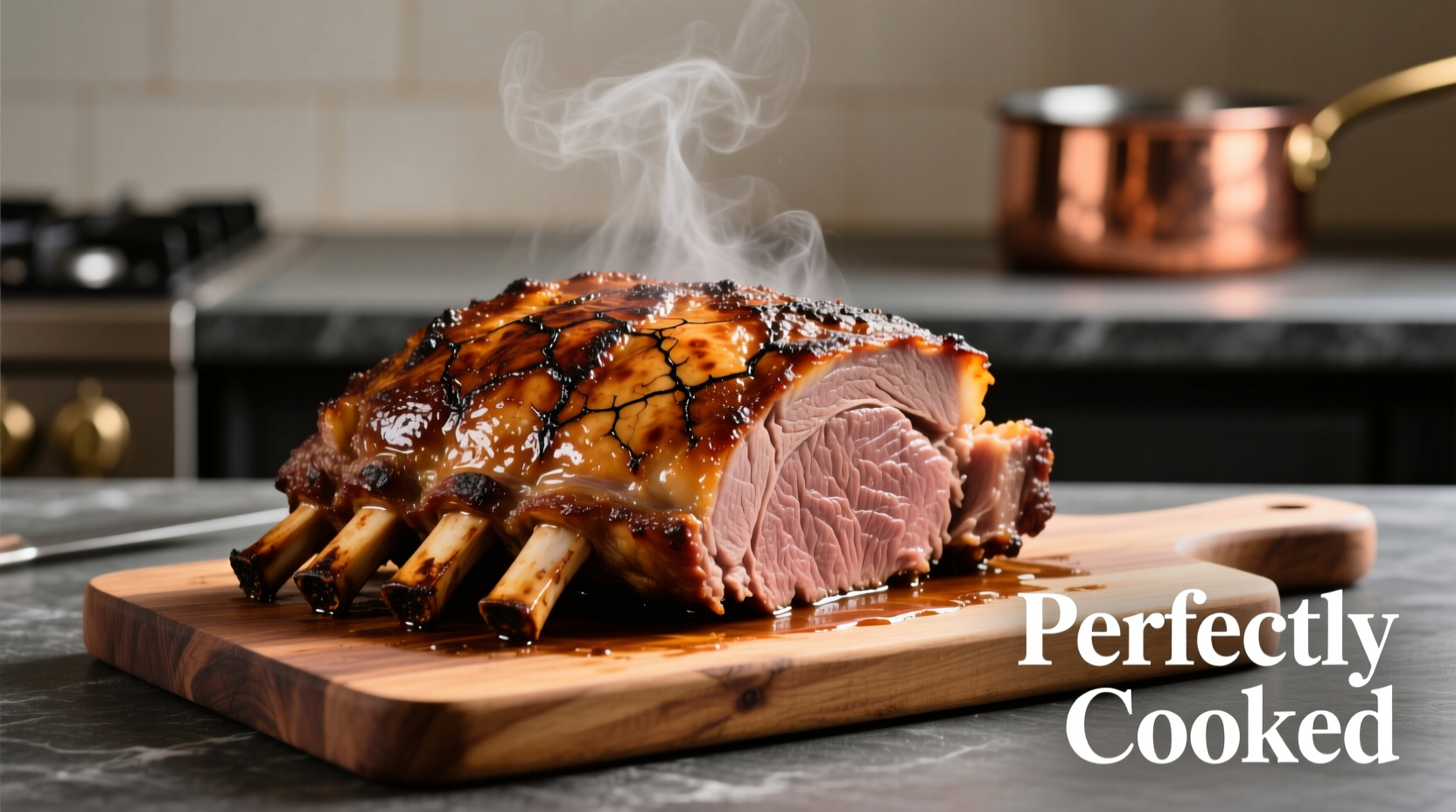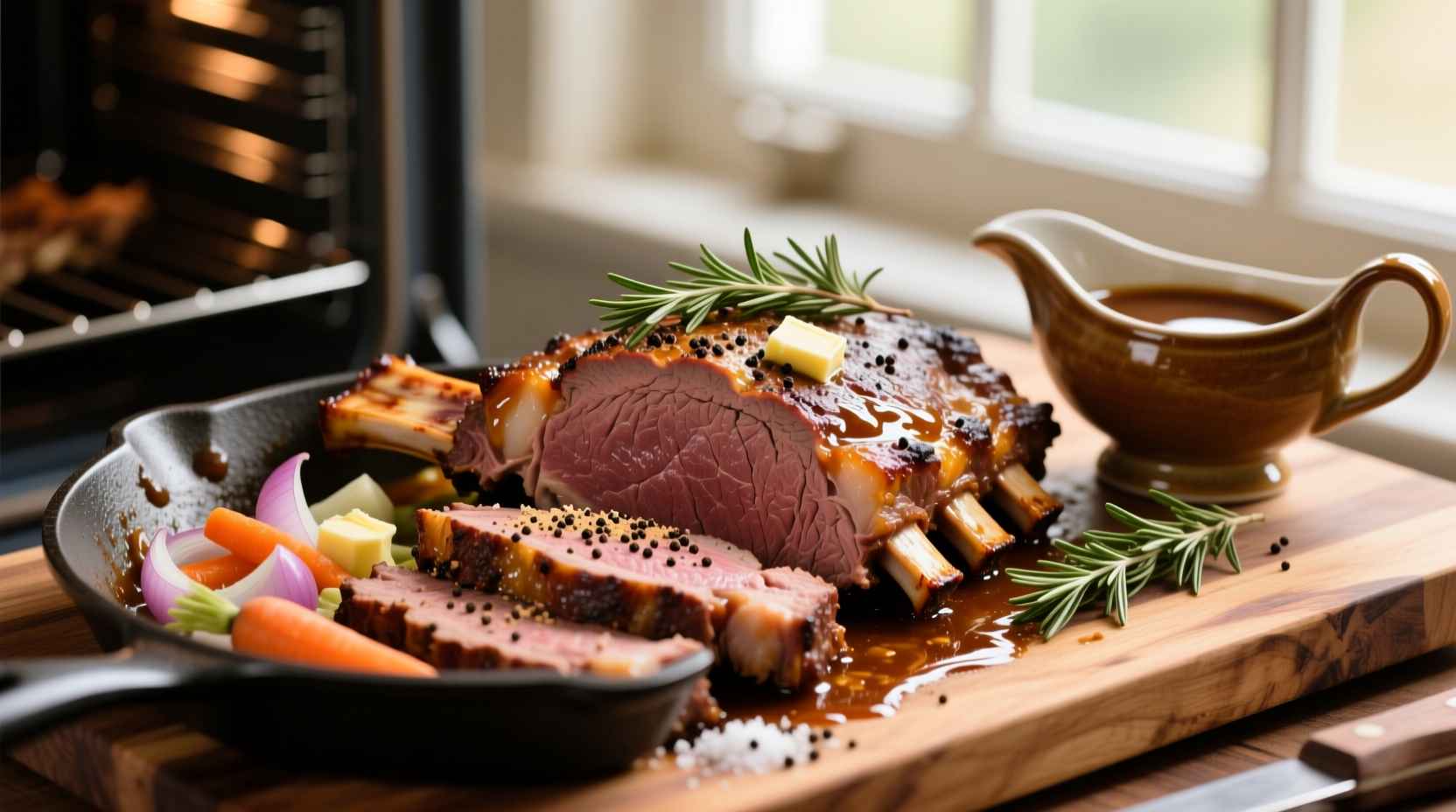Perfectly cook a rib roast in oven with this proven method: Start with a 3-rib prime cut at room temperature, season generously, roast at 450°F for 15 minutes, then reduce to 325°F until internal temperature reaches 115-120°F for medium-rare. Rest 30-45 minutes before carving. This technique delivers evenly cooked meat with a flavorful crust and juicy interior every time.
Mastering oven-roasted rib roast transforms special occasions into memorable feasts. This guide delivers professional results without restaurant equipment, focusing on precise temperature control and timing that home cooks can replicate. You'll learn the exact preparation steps, optimal oven settings, and critical resting period that separates good roasts from exceptional ones.
Why This Rib Roast Method Works
Unlike complicated techniques requiring special equipment, this approach uses standard oven features with science-backed timing. The two-stage temperature method creates a perfect crust while ensuring even cooking through the center. Food safety experts at USDA confirm that proper internal temperatures eliminate pathogens while preserving juiciness.
Essential Preparation Steps
Begin with a USDA Prime or Choice grade rib roast with even marbling. Remove from refrigerator 2-3 hours before cooking to reach room temperature—this prevents uneven cooking. Pat completely dry with paper towels; moisture is the enemy of proper browning. Season generously with kosher salt (1 tablespoon per 5 pounds) and freshly ground black pepper. For enhanced flavor, add garlic powder and dried thyme.

Cooking Timeline and Temperature Guide
Follow this precise cooking sequence for optimal results:
| Cooking Stage | Temperature | Duration | Internal Temp Target |
|---|---|---|---|
| Initial Sear | 450°F | 15 minutes | N/A |
| Main Roasting | 325°F | 15-17 min/lb | 115-120°F |
| Resting Period | Room Temp | 30-45 min | Rises 5-10°F |
Monitoring Doneness Without Guesswork
Invest in an instant-read thermometer—the single most important tool for perfect rib roast. Insert into the thickest part, avoiding bone. The USDA Food Safety and Inspection Service confirms these safe minimum temperatures:
- Medium-rare: 130-135°F (after resting)
- Medium: 140-145°F (after resting)
- Medium-well: 150-155°F (after resting)
Remember that temperature continues rising 5-10 degrees during resting—remove from oven when 5 degrees below your target. This critical carryover cooking prevents overdone meat.
Avoiding Common Rib Roast Mistakes
Many home cooks make these errors that compromise results:
- Skipping the rest period: Cutting too soon releases precious juices. The American Meat Science Association confirms that 30-45 minutes allows juices to redistribute.
- Incorrect oven placement: Position roast fat-side up on a rack in the center of the oven for even heat circulation.
- Overcomplicating seasoning: Simple salt and pepper enhances natural beef flavor better than complex rubs.
- Guessing doneness: Relying on time alone ignores variables like oven accuracy and meat thickness.
When This Method Works Best
This technique excels for traditional holiday roasts weighing 8-14 pounds. For smaller cuts under 6 pounds, reduce initial sear to 10 minutes. The method isn't suitable for well-done preferences—rib roast's marbling shines at medium-rare to medium. For larger roasts over 16 pounds, consider spatchcocking (removing bones and laying flat) for more even cooking.
Carving for Maximum Presentation
After resting, remove bones by slicing along the bone membrane. Place roast fat-side up and slice against the grain into 1/2-inch thick portions. The James Beard Foundation recommends keeping slices uniform for consistent cooking appearance. Serve immediately with collected pan juices for optimal flavor.
Troubleshooting Your Rib Roast
Problem: Uneven browning
Solution: Rotate pan 180 degrees halfway through cooking for even heat exposure.
Problem: Overcooked edges
Solution: Tent edges with foil during final cooking stage if browning too quickly.
Problem: Meat too rare despite proper timing
Solution: Return to oven at 300°F, checking every 5 minutes until desired temperature.











 浙公网安备
33010002000092号
浙公网安备
33010002000092号 浙B2-20120091-4
浙B2-20120091-4